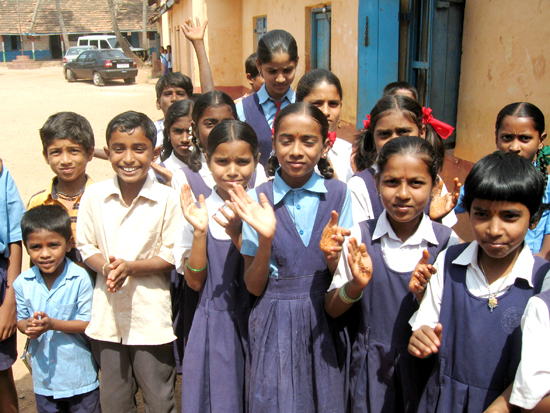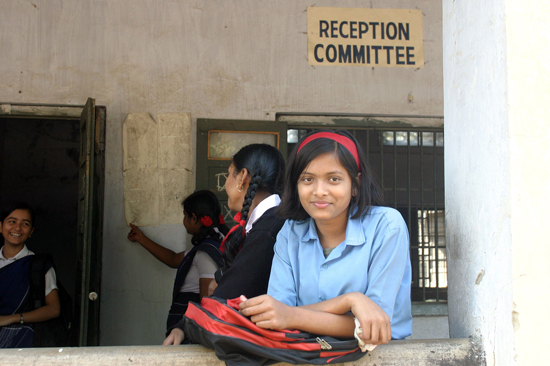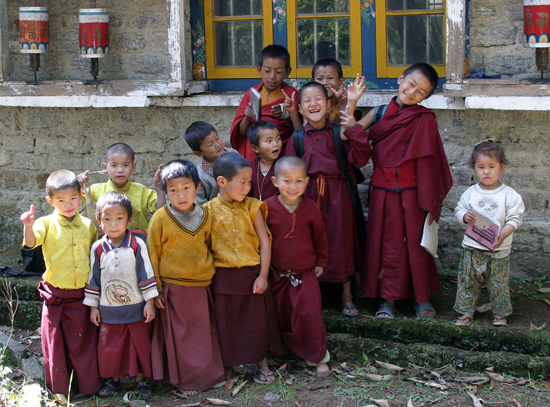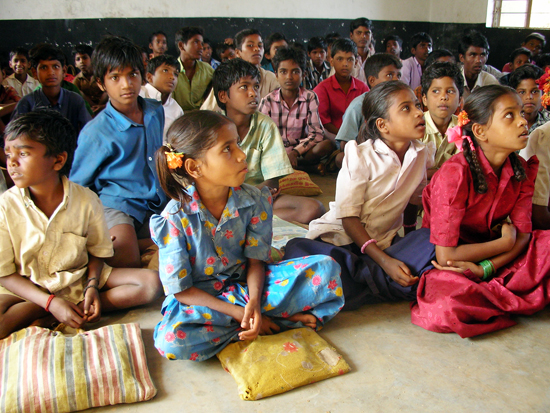Education: Education Structure
Introduction
Compulsory schooling in India begins at the age of 6 and continues through to 14. This represents the primary schooling phase and is referred to as elementary school in India. Homeschooling is legal in India, though it is very rare for parents to undertake this.
Boys and girls are educated together in virtually all of India's state schools. Muslim schools practice segregation, although this may simply involve separating boys and girls into different parts of the classroom. School uniforms are almost universal from primary to higher secondary level. Boys' uniforms often consist of a light-colored shirt and dark trousers. Girls' uniforms are most often a shirt and skirt. Schools will not ban children from sporting religious symbols. In addition to the school uniform, some Muslim girls wear veils and many Sikh boys wear turbans.
The media of instruction switches between English, Hindi, and the respective states' official languages. Private schools usually prefer one of the first two choices, while public schools tend to go with one of the latter two.
Formal structure of the school system
First Cycle Primary (Elementary)
Type of school providing this education: Primary School (Standards I-V or I-IV in a few States)
Length of program: 5 years
Age: 6 to 11 years
Second Cycle Primary (Elementary)
Type of school providing this education: Upper Primary School (Standards VI-VIII or V-VII in a few States)
Length of program in years: 3 years
Age: 11 to 14 years
Lower Secondary
Type of school providing this education: High School (Standards IX-X or VIII-X in a few States)
Length of program in years: 2 years
Age: 14 to 16 years
Certificate/diploma awarded: Secondary School Certificate
Senior Secondary
Type of school providing this education: Higher/Senior Secondary School (Standards XI-XII)
Length of program in years: 2 years
Age: 16 to 18 years
Certificate/diploma awarded: Higher Secondary School Certificate
Primary education is divided into two stages. The first five years constitute the primary stage (Standards I-V), and the next three years, the upper primary stage (Standards VI-VIII). Completion of the two stages concludes compulsory education.
Secondary education usually lasts between two and four years. After two years, pupils who have completed ten years of education (Standard X) take the exam for the Secondary School Certificate. Pupils then enter higher secondary schools or junior colleges and complete a further two years of education (Standards XI and XII). These courses focus on university preparation. Examinations are held at the end of Standard IX either by individual states or by central boards, and lead to the award of the Higher Secondary School Certificate (also called All India Senior School Certificate or Indian School Certificate or Pre-University Course).
Vocational education is offered for two years at some higher schools leading to the Certificate of Vocational Education (CVE). These graduates are then qualified to enter employment in their chosen profession.
School Timetable
In elementary and high schools, the school year usually runs from June to March with some regional variation between the different states.
Term dates: (One) June to start of September, (Two) October to Christmas, (Three) January to end of March
School days: Monday to Friday (Muslim schools teach on Saturday)
School hours: 09:00 to 15:30
Grading System
Secondary schools in India typically use a percentage scale for grading, where 100% is the highest score possible, 35% is the minimum passing grade, and 0% is the lowest grade.
Indian higher education institutions generally grade on a percentage scale as well. A student's score indicates his or her stature as follows: 65-100% First Division/Class, 50-64% Second Division/Class, and 40-49% Third Division/Class.
Some universities in India use a grade point average (GPA) system, where a student's grade is determined by the cumulative average on a four-point scale.
Cost of Schooling
Education is free for children from six to 14 years of age. Due to the perceived poor quality of public education, almost a third of Indian children are privately educated with parents willing to pay the fees involved. A very sophisticated infrastructure of elitist education modelled on British private schools exists for the children of rich and influential people.
India is committed in principle to free education for all its people, with some special provisions for the underprivileged and traditionally oppressed people. The reality, however, is far from the desired outcome. Government surveys suggest that rural Indian parents spend about Rs 366 per year (Rs = Indian Rupee) on uniforms, textbooks, transportation, and meals. This may seem a small amount, but can prove a major financial burden for millions of poor families with several school-age children. For an average agricultural laborer sending two such children to primary school, these costs would be equivalent to 30 to 40 days' wages.
Special Schools
The national policy in India is that children with moderate disabilities should be educated in regular schools. Several state governments give students with disabilities extra time during tests, concessions while learning mathematics, and the option of studying one language less than what is otherwise mandatory. It is recognized, however, that this falls short of providing the specialized education and counseling often encountered in developed nations. The Indian government is addressing this by encouraging special needs teacher-training courses in local universities, as the current provision of such skilled tutors is limited, and almost non-existent in rural schools.
Presently India has four national institutes for delivery of special education to children unable to be integrated into regular schooling. These are the National institute for the Hearing Handicapped, National Institute for the Mentally Handicapped, National Institute of the Visually Handicapped, and National Institute for Orthopedically Handicapped. The centers also train staff and teachers who work with special needs children.
Indians have a right to establish institutions to provide education in their native language and with a religious or cultural emphasis, although the schools must conform to state regulation of teaching standards. Madrassa education is available for Muslim children living in India. Madrassas were originally established to spread the message of Islam to its followers, and today their teaching curriculum is still dominated by subjects like Urdu, Arabic, Persian, and Islamic studies, along with Yunani medicine. In India, madrassa education has been criticized for this focus and its lack of teaching of science and mathematics. Some madrassas do teach subjects such as information technology and journalism.
Curriculum
The National Council of Educational Research and Training (NCERT) is the government body for school curriculum-related matters in India. Indian schools receive program support, advice, training, technical assistance, and limited educational policy enforcement from NCERT.
NCERT guidance on primary education has set forth the principles of a "broad and balanced curriculum," which should include religious education, science, and technology. Secondary education receives less guidance, as schools have considerable flexibility, particularly with regard to vocational options. Recent support has, however, provided for environmental awareness, science and technology education, and the introduction of traditional elements such as yoga into the Indian secondary school system.
Ministry of Human Resource Development
Department of Elementary Education and Literacy
Government of India
Shastri Bhawan
New Delhi-110001
Tel: [91] 11 2338 3936
Web: www.education.nic.in
Copyright © 1993—2024 World Trade Press. All rights reserved.

 India
India 


